Photography From the Fifth Week in December
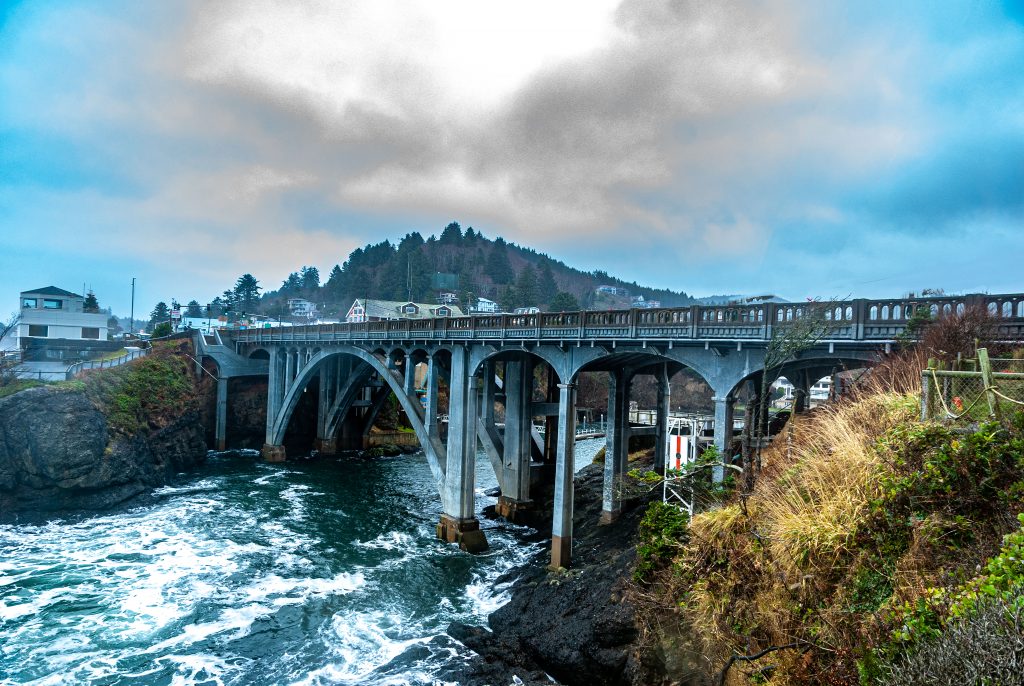
Depoe Bay, Oregon
For the past few weeks, I’ve taken Sunday to look at photos taken during current week, just not the current year. Last week, I shared five photos taken during the fourth week in December, the week that normally would include Christmas day. My calendar tells me that this year, December’s fifth week starts on Sunday the 27th and ends on Saturday, January 2nd. This post’s photographs were all taken between the 27th and the 2nd, and all from a single year, 2011-12.
What is more, all five come from a trip my cousin Ron Stephens and I took that last week of the year. We left Missoula, heading for Smith River, California. From Missoula we drove to Portland, then spent two days driving down the Oregon Coast. After spending two days in Smith River, we headed home to Missoula. We did not return via the Coast. Rather we turned inland, and drove up Interstate 5. We spent New Year’s Eve with friends in Portland. Finally, we drove home via the Columbia Gorge. It was a great trip, and I took lots of photos.
The Depoe Bay Bridge
For years, the U.S. Highway 101 bridges along the Oregon Coast have fascinated me. Most date from the 1920s and 1930s, and Oregon’s premier bridge engineer, Conde B. McCullough, designed most of them. I have long wanted to produce a coffee table book featuring McCullough’s bridges. Cousin Ron is a proficient photographer, and I enlisted his help with this dream. We started looking for bridges just north of Tillamook, Oregon. Just north of that city, , and we captured the Wilson River Bridge, designed by McCullough and built in 1931. Two more bridges further south look much the same and we would photograph them on the 28th.
Depoe Bay is a town of 1,500 people on the Oregon Coast. Roughly half-way between Lincoln City and Newport, Depoe Bay calls itself the Whale Watching Capital of Oregon. The Bay itself is “the world’s smallest harbor,” according to the Visit the Oregon Coast website. As Oregon built the coastal highway, the entry to that harbor required a bridge. Conde McCullough designed one, and the Portland firm of Kuckenberg and Wittman built the bridge in 1927.
The bridge, fine in 1927, proved to be too narrow, and in 1940, the state of Oregon rehabilitated it, widening the roadbed. The bridge is a concrete open spandrel deck arch. It measures 333 feet in length, with the main span 150 feet. As seen in the photograph, it has one main span and six approach spans—three on each end. I took the photo looking back from off the south-west end of the bridge.
On the 27th and 28th, we were able to photograph eleven other Conde McCullough bridges on Highway 101.
The Caveman Bridge
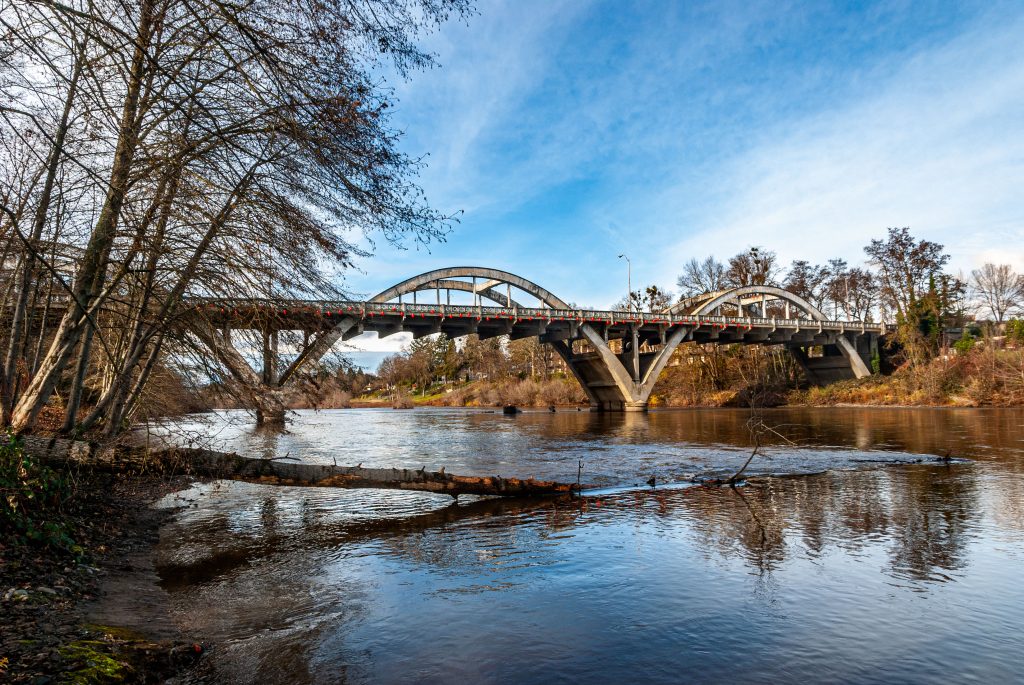
Grants Pass, Oregon
Driving home, we were able to capture six more Conde McCullough bridges between Grants Pass and Portland. The Caveman Bridge, also known as the Rogue River Bridge, carries U.S. Highway 199 traffic southbound through Grants Pass. The rainbow arch bridge spanning the Rogue River was built in 1931. The bridge measures 549.9 feet in length with its largest span at 149.9 feet. If you look at my photograph carefully, you’ll see the red Christmas lights along the bridge.
The Robert A. Booth Bridge
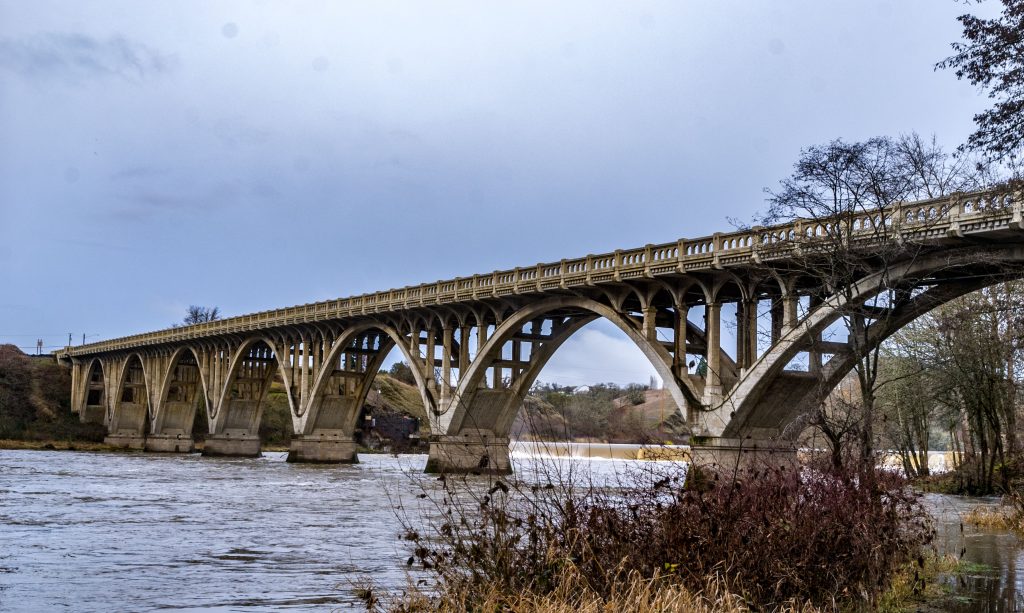
Winchester, Oregon
Built in 1923, the Robert A. Booth Bridge is the longest bridge McCullough designed in the 1920s. It spans the North Umpqua River near the Douglas County town of Winchester. For that reason, people also call it the Winchester Bridge and also the North Umpqua Bridge. Oregon Highway 99 (old U.S. 99) uses the bridge to cross the river. The total length of the bridge is 883.9 feet, with the largest span measuring 112 feet. With a deck width of only 24 feet, it can be, as one reviewer said, “a challenge to bike over.” If you look carefully between the spans, you can see the river spilling over the Winchester Dam. The Dam, built in 1890, is considerably older than the bridge. It is also in much worse shape.
The Oregon City Bridge
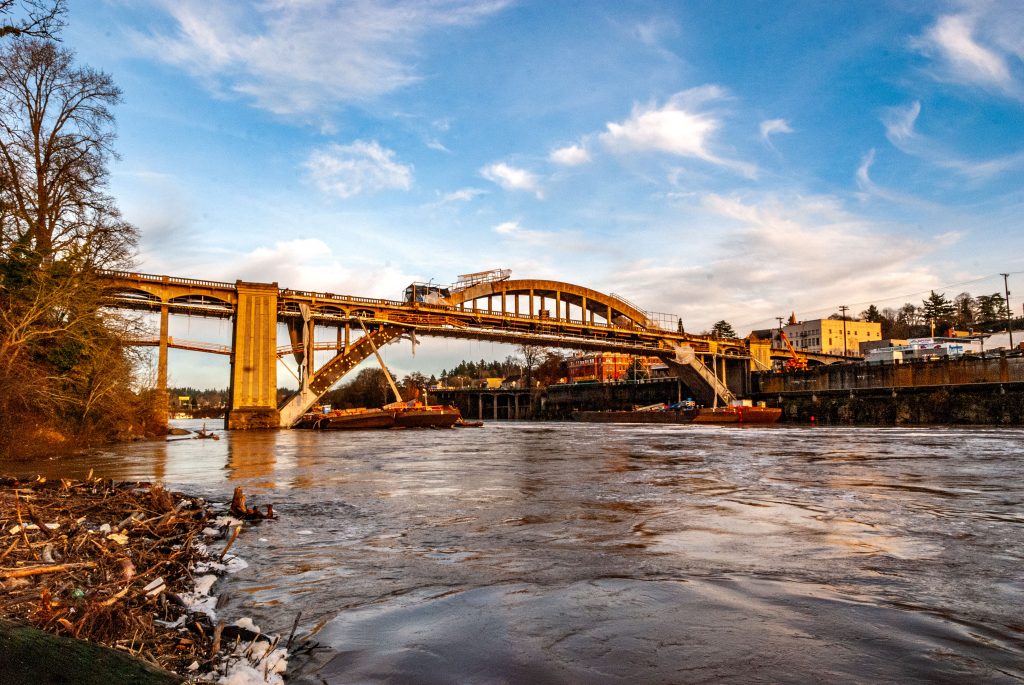
Oregon City, Oregon
Speaking of challenges, it was a challenge to get a decent photograph of the Oregon City Bridge. Originally built in 1922, the bridge was undergoing rehabilitation when Ron and I stopped there. That’s why you can see scaffolding and heavy equipment in my photograph. The bridge, as you can guess by the name, carries 7th Street across the Willamette River in Oregon City. Oregon City is the seat of Clackamas County and is just south of Portland. The bridge measures 745 feet in length, with the main span measuring 360 feet. The website Historic Bridges says:
This is a unique bridge because it looks like a concrete arch bridge, such as a rainbow arch bridge or a Marsh arch bridge. However, it is classified as a steel arch bridge because the concrete that surrounds the solid steel boxes and beams within is simple gunnite (shortcrete) and thus the concrete is not a structural element, but acts more like a coat of paint to protect the steel.
During the 2012-13 rehabilitation, new gunnite replaced much of the original material.
The Mosier Creek Bridge
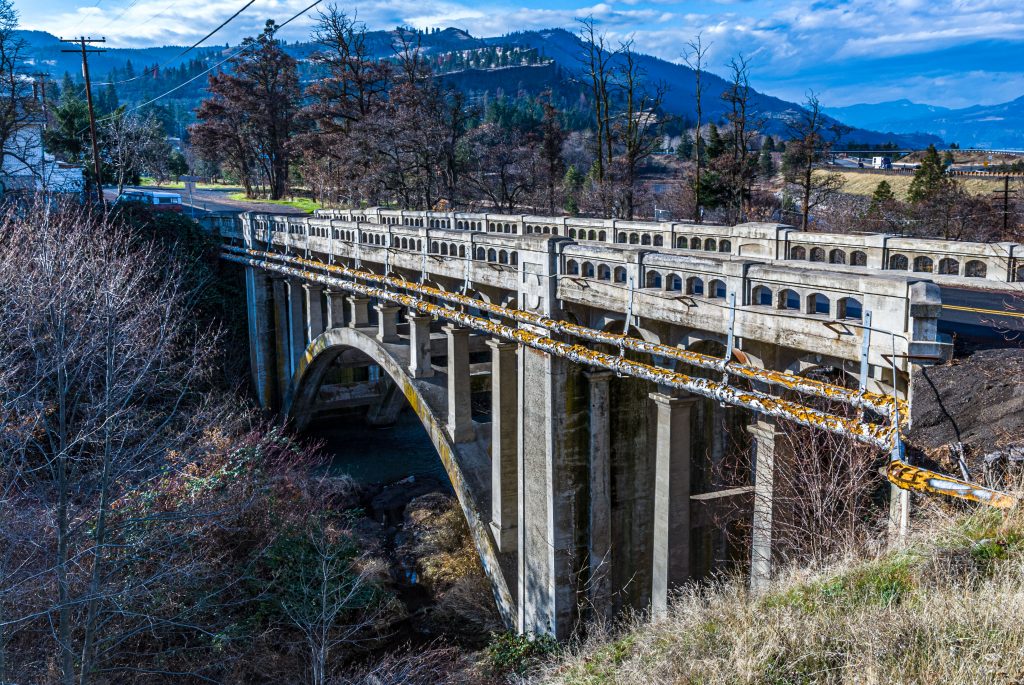
Mosier, Oregon
The Mosier Creek Bridge was the last Conde McCullough bridge we photographed during the fifth week in December. We were on our way home, and it was actually January 2nd when we took these photos. Mosier Creek, and indeed the town of Mosier, is a few miles west of The Dalles, Oregon. It is, therefore, at the eastern end of the Columbia Gorge. The bridge carries U.S. Highway 30 across Mosier Creek. The total length is 182 feet, with the main span being 110 feet in length. This was the third bridge McCullough designed for the state of Oregon. It dates from 1920. And that’s it for my photography from the fifth week in December.
In his lifetime, Conde McCullough designed over 600 bridges. He worked for the state of Oregon from 1919 to 1935 and again from 1937 to 1946. For the two years in the middle, he was in Costa Rica where he designed bridges for the Pan-American Highway. His bridges grace roadways all around Oregon, and finishing that coffee table book is definitely on my bucket list.
![]()

Thank you.